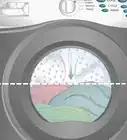This article was co-authored by Meredith Juncker, PhD. Meredith Juncker is a PhD candidate in Biochemistry and Molecular Biology at Louisiana State University Health Sciences Center. Her studies are focused on proteins and neurodegenerative diseases.
This article has been viewed 27,352 times.
Diapers come in a wide range of brands, styles, and sizes. It can save you a lot of time and money if you know what diaper absorbs the most urine, and thus needs changing the least frequently. Exact readings would require a lab and an extensive controlled study. Fortunately, a quick experiment in the kitchen makes it easy to compare different brands or types of diapers to see how they rank in relation to each other.
Steps
Soaking the Diapers
-
1Fill a container with a saline solution. Disposable diapers use chemical compounds known as super absorbent polymers (SAPs) to soak up liquids. Due to the salt content in urine, they have a harder time soaking it up than water. You should use 9 grams (1.6 tsp) of table salt for each 1 liter (4.2 cups) of water to simulate your baby's urine and get accurate results.
- SAPs absorb liquid through osmosis and are made from partially neutralized sodium polyacrylate.[1]
-
2Weigh a dry diaper of each brand or type. Knowing the dry weight of the diaper will make it easier to determine how much liquid the diaper absorbed. Use a scale to gain as accurate of a measurement as possible. Write your measurement down for later reference.
- Keep a journal or spreadsheet with the dry weights of all diapers. Include a column for wet weights, which will be measured later, and for the difference between dry weight and wet weight.
Advertisement -
3Place the diaper upside down for 10 minutes in your saline solution. You want to expose the absorbent core of the diaper as effectively as possible. Avoid the urge to press down or apply pressure to the diaper. Set a timer for 10 minutes, and remove the diaper from the saline solution when the time is up.
- Use a timer to ensure that the diapers are all exposed to the liquid for the same amount of time. This eliminates the possibility of one diaper absorbing more just because of extra time to absorb liquid.
-
4Hang the diaper for 2 minutes. Using clothespins or clips, hang the diaper from its corners. This will allow excess liquid that was not absorbed to drip off the diaper.
- Weighing diapers with excess liquid on them will make it look like the diaper absorbed more than it actually did.
-
5Weigh the wet diapers. This will give you a final weight. The difference between the dry weight and the wet weight will tell you how much liquid you absorbed. Be sure that excess liquid was allowed to run off the diaper for the most accurate results.
-
6Calculate how much saline solution was absorbed. Set up an equation to determine the amount of liquid that was absorbed. Subtract the dry (initial weight) from the wet (final weight). Since the weight of the actual diaper materials does not change, the difference in these two weights is the weight of liquid absorbed.
- For example, if your dry weight was 100 g and your wet weight was 250 g, you would simply subtract 100 from 250 ().
Pouring Saline into the Diapers
-
1Fill multiple pitchers with saline solution. Choose pitchers that allow you to control pour easily. Mix a solution of 9 grams (1.6 tsp) of table salt per 1 liter (4.2 cups) of water to simulate urine. Fill each pitcher with the solution.[2]
- Use identical pitchers and have 1 pitcher for each diaper you are testing.
-
2Place the diapers facing up. You want to be able to pour directly onto the center of the diaper. This will most effectively test how well the liquid is absorbed and dispersed throughout the absorbent core. This is a better simulation of urinating than uniformly soaking a diaper in liquid.[3]
-
3Pour the solution on the diapers. Pour slowly. Allow all of the liquid to be absorbed. Any excess liquid that runs off of the diaper will cause results to be inaccurate. When the diaper stops absorbing, stop pouring. If, after a few seconds, the diaper absorbs the liquid, try pouring a little more until absorption stops.[4]
- Put the diapers in a bowl or pan to catch any runoff liquid. Pour the excess liquid back into the pitcher to improve the accuracy of your measurements.
-
4Compare the amount of solution absorbed. In this step, no math is needed. Put the pitchers side by side. The pitcher with the least amount of saline corresponds to the diaper that absorbed the most liquid. The pitcher with the most saline corresponds to the diaper that absorbed the least liquid.[5]
- Use a chart or table to keep track of your data. Create 1 column for the brand or type of diaper and 1 for the amount of liquid left in the pitcher. The more liquid left in the pitcher, the worse the diaper performed.
Testing Diapers “In Action”
-
1Weigh a diaper. Knowing the weight of the diaper before putting it on your baby gives you a reference point for later. Each brand will likely have a different weight. Be sure to do this for each diaper you want to compare.
- This experiment will be done over many hours or even days. Keep track of your diapers and how well they perform in a chart. Have a column for brand, dry weight, wet weight, difference between dry and wet weights, and amount of time that the diaper was on the baby.
-
2Put the diaper on your baby. Do this just as you would do any other time. The idea of this method is to test how diapers perform on the baby. Make sure that the baby wears the same clothing overtop of each diaper you test. Otherwise, differences in how the clothing fits over the diaper (and puts pressure on the diaper) could interfere with your results.[6]
-
3Record the time that the diaper was on your baby. The most reliable time to do this test is at night. Nighttime is also the longest stretch that a diaper will need to keep your baby dry. Write down the time you put each diaper on, and the time you took it off.[7]
- Change diapers when they are wet. Do not leave wet diapers on your baby to try to absorb more, as this could lead to diaper rash and skin irritation for your baby.
-
4Weigh the wet diaper. Unfortunately, measuring time alone is not an accurate way to gauge how hard a diaper is working. Your baby may not urinate exactly the same amount every night. To help level the playing field, take a final weight for each diaper to see how much urine it absorbed during the time it was worn.
- Subtract the dry weight that you took before putting the diaper on from the wet weight. This will give you the weight of the urine absorbed.
-
5Repeat with other brands and compare. Go through the same series of steps with each brand of diapers. The more methodical you are with your process, the more accurate your comparison will be. While testing diapers on your baby will help you get a feel for what brand of diaper performs best on your child, keep in mind that it is not the same as a controlled experiment to test absorbency.
Warnings
- Never taste the absorbent core of a diaper. The SAPs are advertised as non-toxic but should not be consumed.⧼thumbs_response⧽
Things You'll Need
- Diapers
- Water
- Salt
- Pitchers or water basins
- Scale
- Clothespins
References
- ↑ https://www.thoughtco.com/how-disposable-diapers-work-607891
- ↑ http://www.babygearlab.com/Disposable-Diaper-Reviews/How-We-Test
- ↑ http://www.babygearlab.com/Disposable-Diaper-Reviews/How-We-Test
- ↑ http://www.babygearlab.com/Disposable-Diaper-Reviews/How-We-Test
- ↑ http://www.babygearlab.com/Disposable-Diaper-Reviews/How-We-Test
- ↑ http://www.babygearlab.com/Disposable-Diaper-Reviews/How-We-Test
- ↑ http://www.babygearlab.com/Disposable-Diaper-Reviews/How-We-Test
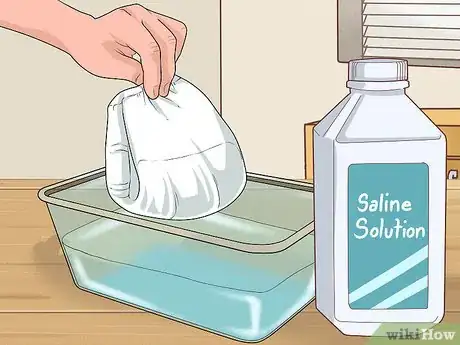

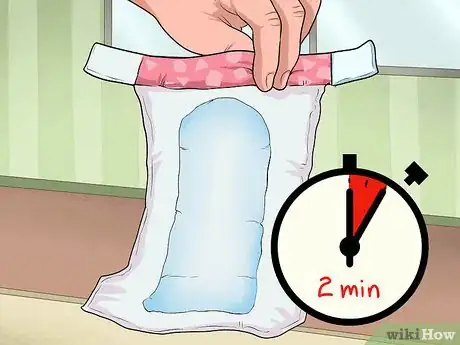

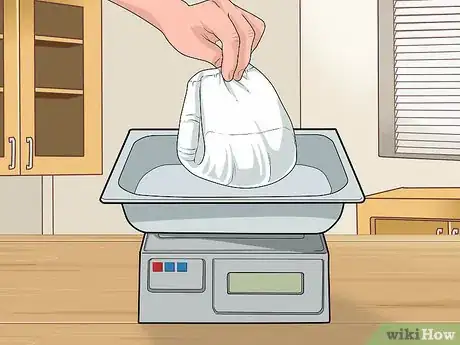
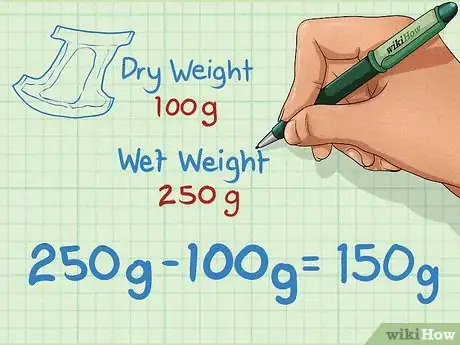

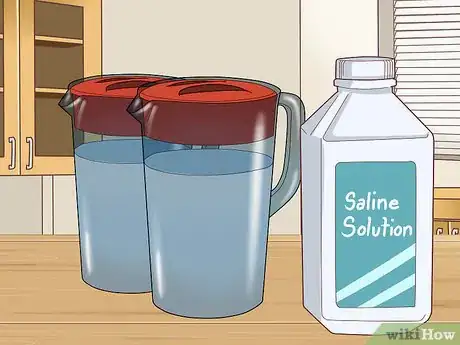
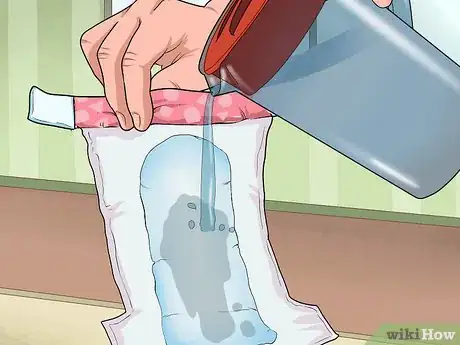
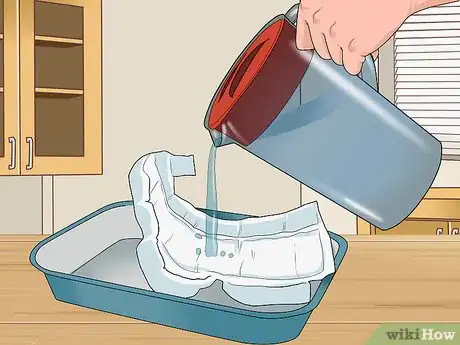

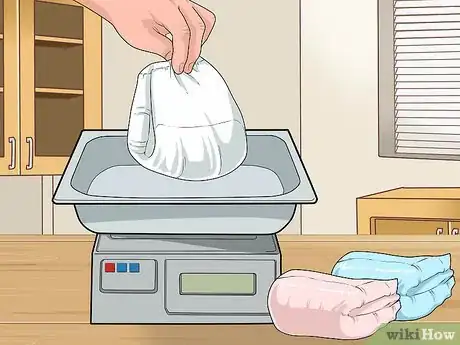

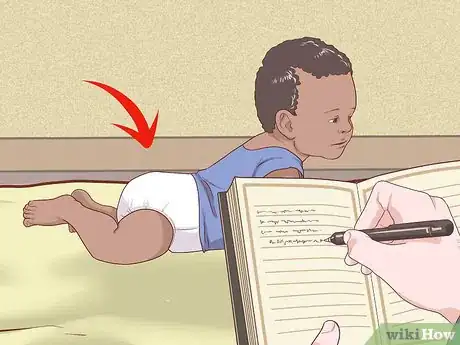
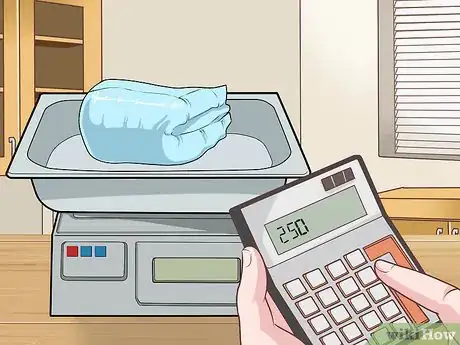
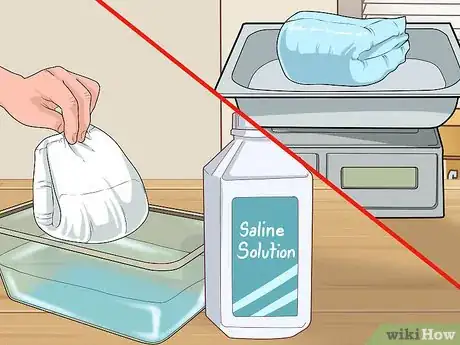






-Step-12-Version-2.webp)














